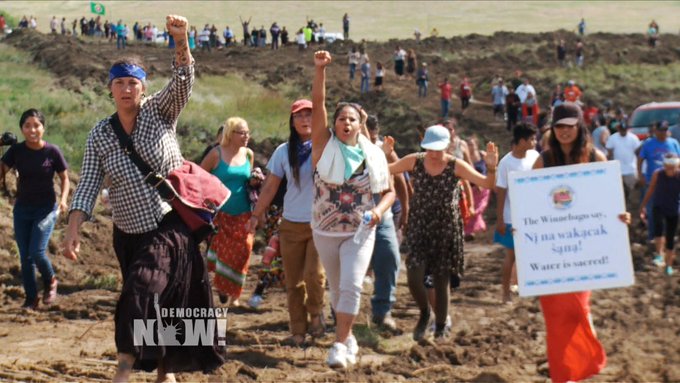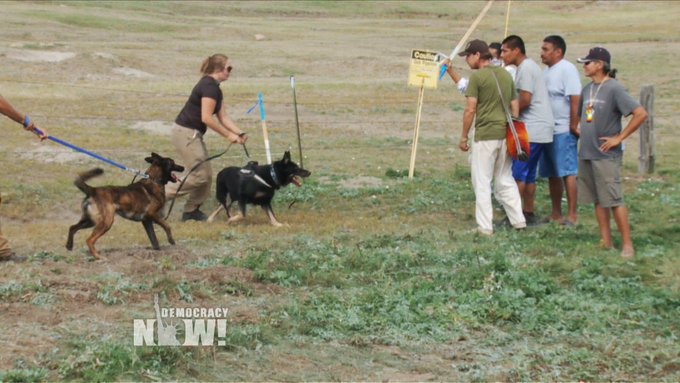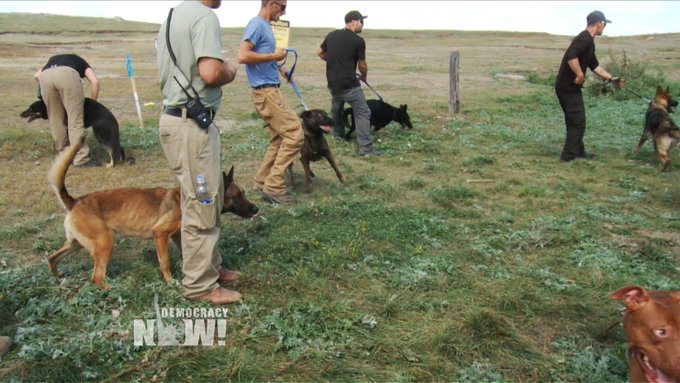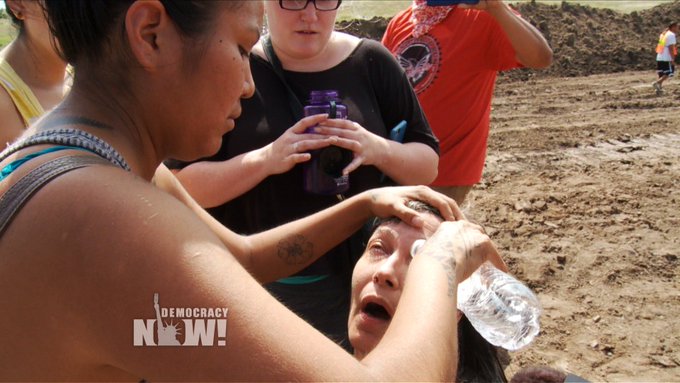Feds to conduct cruel and costly wild horse helicopter stampede
ELY, Nev. – The Bureau of Land Management (BLM) is planning a helicopter roundup stampeding native wild horses for miles over harsh icy terrain into traps on or about January 23 despite no concrete evidence of wild horse overpopulation in the Triple B Complex.
The Eastern Nevada complex near Ely and Elko is made up of the Triple B HMA, Maverick-Medicine HMA, and Cherry Springs Wild Horse Territory (USFS). Together these three legal wild horse areas contain 1,682,998 acres.
Instead of protecting or preserving America’s indigenous wild horses using holistic land management methods, the feds intend to chase our icons of freedom with helicopters for miles to round them up, break up their families, probably killing some.
Please sign and share the Petition to Defund the Roundups: https://www.change.org/p/defund-and-stop-the-wild-horse-burro-roundups Members of Congress are watching this petition. If one million people sign the petition then together we will stop the roundups.
The BLM’s roundup for “population control” plans on permanently removing at least 1,000 native wild horses, forcibly drugging approximately 250 indigenous mares with dangerous population control Pesticide PZP-22. Then the feds plan to release those drugged wild mares back into the gigantic Eastern Nevada complex–along with about 250 stallions. At least 1000 native wild horses will lose their homes despite returning some.
Right now all the wild horses in federally funded holding facilities are at risk of being shot or sold to slaughter because of poor management choices, overpopulation, lies and nasty politics.
As if that’s not bad enough, the BLM is planning on adding 1000 more wild horses to their broken captivity system with expensive holding facilities and an adoption program with rotten customer service.
It’s essential for Congress to know exactly how many wild horses and burros are living in the wild and in captivity. We have a petition you can sign and share that demands a head count and an investigation into the BLM’s sketchy program: https://www.change.org/p/u-s-senate-investigate-the-wild-horse-burro-count-in-captivity-and-freedom . Please send your elected officials the petition and take it with you to meetings to be a voice for the voiceless.
(Sadly the only paid lobbyists seem to be pushing Pesticide PZP so elected officials are getting the wrong education.)
Congress should insist the BLM take wild horses out of costly holding facilities to repatriate them into the wild in friendly areas, where neighbors appreciate them, and onto legal but empty Herd Areas to help prevent catastrophic wildfires and heal the land. The BLM must not put more native wild horses in costly holding facilities.
The Bureau of Land Management and the Department of Interior want to find ways to dispose of our national treasures so they can control and make billions of dollars off the public’s land.
Helicopter contractors, earning millions from roundups, will be paid to stampede native wild horses for miles and miles over snow, ice, and dangerous rocky terrain. Stampeding wild horses is cruel, unnatural and terrifying.
Then the wild horses will be shoved, sweating, into trap corrals with a fog of steam emanating from their wet, stressed bodies in freezing temperatures . . . The wild ones’ muscles can seize up after the terrifying stampede causing severe pain, and the wild horses’ upper respiratory systems will suffer.
The expensive helicopter roundup–which is expected to last approximately a month in freezing temperatures–will put native wild horses at risk of upper respiratory diseases such as strangles and equine pneumonia. Some may die.
These deaths won’t be counted as “roundup related” because the wild horses will die painful deaths while suffering in holding facilities. Dead bodies of native wild horses will be scooped up by BLM tractors before public watchdogs can notice.
The Triple B roundup is being conducted by the BLM Ely District Office which is conflicted with extreme energy industry and mining bias. The Bureau gets a kickback from what is extracted on BLM land–whether it’s gold, copper, lithium, oil, natural gas or other resources. The BLM has boasted that they made more than 4 billion dollars last year. Most of that is from the extractive industry polluting the environment on public land. The agency only cares about money.
Less than 2,700 wild horses will remain in the vast Triple B Complex if this cruel roundup starts and it isn’t stopped in the courts.
In 2010, when the BLM managers were shipping wild horses to slaughter through middleman Tom Davis, the vast Herd Management Areas had many more wild horses living in freedom. The Bureau then decided it could lower the allowed numbers through a sleight of hand, by joining all the HMAs into a “complex.” No one challenged the formation of complexes in court, so the BLM went ahead with their plan to reduce the number of wild horses allowed in the area.
The Triple B Complex is made up of 1,682,998 acres. To leave only 2,766 wild horses on that vast amount of acreage translates to 608 acres per wild horse. With 200 acres per wild horse 8,414 wild horses could live on the huge landscape and with 100 acres per wild horse 16,829 wild horses could stay living wild and free at virtually no cost to the American taxpayer.
The public should know how much privately owned domestic livestock, cattle, and sheep would be allowed to graze in the Triple B Complex after native wild horses are rounded up.
Through control of gathering data, BLM scapegoats native wild horses for livestock damage made by one million head of domestic cattle and sheep on public land.
Public Relations campaigns funded through the BLM claim that the purpose of the roundup is to prevent degradation of public lands by an “excess” of wild horses, and to restore a “thriving natural ecological balance” and create “multiple-use relationship’ on public lands, consistent with the provisions of Section 1333(b) of the 1971 Wild Free-Roaming Horses and Burros Act (WFRHBA)
Yet the BLM has never proved that there are any “excess” wild horses. The key word in the BLM’s PR phrase is “relationship”. Instead of working with local public land users to create healthy rangelands using wild horses as a resource for holistic land management, the BLM and the locals are ignoring possibilities to take land management out of the dark ages.
The reality is that the agency doesn’t think twice about the ecological damage associated with a helicopter roundup, stampeding wild horses for miles over the terrain and into trap corrals. The BLM ignores that trucks and trailers would be destroying the habitat and the amount of greenhouse gas polluting the environment as a result of a million dollar roundup.
Million dollar roundups fund the BLM’s mess of a Wild Horse Program. They need the “problem” to keep the flow of cash coming in from Congress. The reality is there is no overpopulation and no problem, only out of date land management.
The truth is, the current population for the Triple B Complex is unknown. The BLM’s guess is “approximately 3,842 wild horses” in the Triple B Complex consisting of 1,682,998 acres. As discussed above, more than 16,829 native wild horses could live in the Triple B complex with 100 acres per wild horse. That’s 12,987 more wild horses than the BLM claims are living there now!
The BLM’s management level for all the Herd Management Areas within the targeted Triple B Complex helicopter stampede is ridiculously low–at only 472 to 884 wild horses for 1,682,998 acres. The BLM must revise management levels and be honest about unfair grazing allocation to livestock and stop blaming native wild horses for livestock damage from years beforehand as well as today.
The BLM plans to roundup 1,500 wild horses and remove approximately 1,000 indigenous wild horses forever. The BLM will only release about 250 mares that they will forcibly drug with the dangerous population control pesticide PZP-22 to slow the population growth for 2 years despite the fact that the National Academy of Sciences found there is no evidence of overpopulation. PZP-22 is dangerous.
PZP wreaks havoc with the law of nature, the mustangs’ immune systems, hormones, social behaviors and sense of well-being–and ruins federally protected wild horses’ right to freedom from harassment, branding, and abuse.
All forms of the EPA Restricted Use Pesticide PZP will sterilize wild horses after multiple applications. Only 250 stallions will be returned to the range yet established families (harem bands) will be destroyed.
These wild captives will be subjected to the horrors of the BLM’s processing facilities where families are ripped apart, males are separated from females, and ID numbers are tattooed on their bodies. Some American wild horses will be cruelly abused in population control experiments, and they all will be at risk of death.
The lack of compassion and violation of the federal law protecting wild horses from abuse and harassment opens the BLM up to costly lawsuits and continued waste of tax dollars. It’s time to look at this whole situation differently and come up with holistic management that works!
For the Wild Ones,
Anne Novak
Executive Director
Protect Mustangs
Contact@ProtectMustangs.org
Protect Mustangs is a 501(c)3 nonprofit organization dedicated to the protection and preservation of native and wild horses. www.ProtectMustangs.org
Note: The roundup is being conducted under the DOI-BLM-NV-E030-2017-0010-EA Antelope and Triple B Complexes Gather Plan Environmental Assessment decision signed on December 21, 2017. The decision record and determination of National Environmental Policy Act adequacy can be accessed at the national NEPA register at www.goo.gl/HQJ73h.
Sources:
Thomas, C. D., A. Cameron, R. E. Green, M. Bakkenes, L. J. Beaumont, Y. C. Collingham, B. F. N. Erasmus, M. Ferreira de Siqueira, A. Grainger, Lee Hannah, L. Hughes, Brian Huntley, A. S. van Jaarsveld, G. F. Midgley, L. Miles, M. A. Ortega-Huerta, A. Townsend Peterson, O. L. Phillips, and S. E. Williams. 2004. Extinction risk from climate change. Nature 427: 145–148.
Endangered Species. 2009. In Encyclopædia Britannica. Available in Encyclopedia Britannica Online at http://www.britannica.com/EBchecked/topic/186738/endangered-species.
Chivian and Bernstein 2008, citing IUCN.
Wildlife crisis worse than economic crisis. 2009. Press release. http://www.iucn.org/?3460/Wildlife-crisis-worse-than-economic-crisis–IUCN.
Wake, D. B. and V. T. Vredenburg. 2008. Are we in the midst of the sixth mass extinction? A view from the world of amphibians. Proceedings of the National Academy of Sciences of the United States of America 105: 11466–11473. http://www.pnas.org/content/early/2008/08/08/0801921105.abstract.
McCallum, Malcolm L. 2007. Amphibian decline or extinction? Current declines dwarf background extinction rate. Journal of Herpetology 41(3): 483–491. Copyright Society for the Study of Amphibians and Reptiles.
— http://www.stateofthebirds.org
Jelks, H. J., S. J. Walsh, N. M. Burkhead, S. Contreras-Balderas, E. Díaz-Pardo, D. A. Hendrickson, J. Lyons, N. E. Mandrak, F. McCormick, J. S. Nelson, S. P. Platania, B. A. Porter, C. B. Renaud, J. J. Schmitter-Soto, E. B. Taylor, and M. L. Warren, Jr. 2008. Conservation status of imperiled North American freshwater and diaddromous fishes. Fisheries 33(8): 372–407.
Klappenbach, L. 2007. How many species inhabit our planet? About.com Guide to Animals. http://animals.about.com/b/2007/08/13/how-many-species-on-earth.htm
Tilman, D., R. May, C. L. Lehman, M. A. Nowak. 1994. Habitat destruction and the extinction debt. Nature 371:65–66.
Walters C, Gunderson L, Holling C. 1992. Experimental policies for water management in the Everglades. Ecological Applications 2:189–202.
Walters CJ. 1986. Adaptive management of renewable resources. New York: Macmillan.
Wilhere GF. 2002. Adaptive management in habitat conservation plans. Conservation Biology 16:20–29.
Wilhere GF. 2009. Three paradoxes of habitat conservation plans. Environmental Management 44:1089–1098.
Williams BK. 1996. Adaptive optimization of renewable natural resources: solution algorithms and a computer program. Ecological Modelling 93:101–111.
Williams BK, Szaro RC, Shapiro CD. 2007. Adaptive management: the U.S. Department of the Interior technical guide. Washington, D.C.: U.S. Department of the Interior, Adaptive Management Working Group. Available: http://www.doi.gov/initiatives/AdaptiveManagement/TechGuide.pdf (November 2011).
Nichols JD, Williams BK. 2006. Monitoring for conservation. Trends in Ecology & Evolution 21:668–673.
Possingham H, Lindenmayer D, Norton T. 1993. A framework for the improved management of threatened species based on population viability analysis (PVA). Pacific Conservation Biology 1:39–45. Prato T. 2005. Accounting for uncertainty in making species protection decisions. Conservation Biology 19: 806–814.
Ralls K, Beissinger SR, Cochrane JF. 2002. Guidelines for using population viability analysis in endangered species management. Pages 521–550 in Beissinger SR, McCullough DR, editors. Population viability analysis. Chicago: University of Chicago Press.
Ralls K, Starfield AM. 1995. Choosing a management strategy: two structured decision making methods for evaluating the predictions of stochastic simulation models. Conservation Biology 9:175–181.
Regan HM, Ben-Haim Y, Langford B, Wilson WG, Lundberg P, Andelman SJ, Burgman MA. 2005. Robust decision making under severe uncertainty for conservation management. Ecological Applications 15:1471–1477.
Regan TJ, Taylor BL, Thompson G, Cochrane JF, Merrick R, Nammack M, Rumsey S, Ralls K, Runge MC. 2009. Developing a structure for quantitative listing criteria for the U.S. Endangered Species Act using performance testing: Phase I report. La Jolla, California: National Oceanic and Atmospheric Administration, Southwest Fisheries Science Center. NOAA Technical Memorandum, NOAA-TM-NMFS-SWFSC-437. Available: http://www.sefsc.noaa.gov/turtles/TM_NMFS_SWFSC_437.pdf (November2011). Ruhl J. 1990. Regional habitat conservation planning under the Endangered Species Act: pushing the legal and practical limits of species protection. Southwestern Law Journal 44:1393–1425.
Ruhl J. 2004. Taking adaptive management seriously: a case study of the Endangered Species Act. University of Kansas Law Review 52:1249–1284.
Ruhl J. 2005. Regulation by adaptive management—is it possible? Minnesota Journal of Law, Science &Technology 7:21–57.
Ruhl J. 2008. Adaptivemanagement for natural resources—inevitable, impossible, or both? Rocky Mountain Mineral Law Institute Proceedings 54.
Runge MC, Bean E, Smith DR, Kokos S. 2011a. Non-native fish control below Glen Canyon Dam—report from a structured decision making project. U.S. Geologica Survey Open-File Report 2011-1012:1–74. Available: http://pubs.usgs.gov/of/2011/1012/pdf/ofr20111012. pdf (November 2011).
Runge MC, Converse SJ, Lyons JE. 2011b. Which uncertainty? Using expert elicitation and expected value of information to design an adaptive program. Biological Conservation 144:1214–1223. [SARA] Species at Risk Act. 2002. Statutes of Canada 2002, c. 29. (Assented to December 12, 2002).
Shaffer ML. 1981. Minimum population sizes for species conservation. Bioscience 31:131–134.
Smith CB. 2011. Adaptive management on the central Platte River—science, engineering, and decision analysis to assist in the recovery of four species. Journal of Environmental Management 92:1414–1419.
Smith CL, Gilden J, Steel BS, Mrakovcich K. 1998. Sailing the shoals of adaptive management: the case of salmon in the Pacific Northwest. Environmental Management 22:671–681.
Starfield AM. 1997. A pragmatic approach to modeling for wildlife management. Journal of Wildlife Management 61:261–270.
Tyre AJ, Peterson JT, Converse SJ, Bogich T, KendallWL,Miller D, Post van der Burg M, Thomas C, Thompson R, Wood J, Brewer DC, Runge MC. 2011. Adaptive management of bull trout populations in the Lemhi basin. Journal of Fish and Wildlife Management 2(2):262–281.
Volkman JM, McConnaha WE. 1993. Through a glass, darkly: Columbia River salmon, the Endangered Species Act, and adaptive management. Environmental Law 23:1249–1272.

















